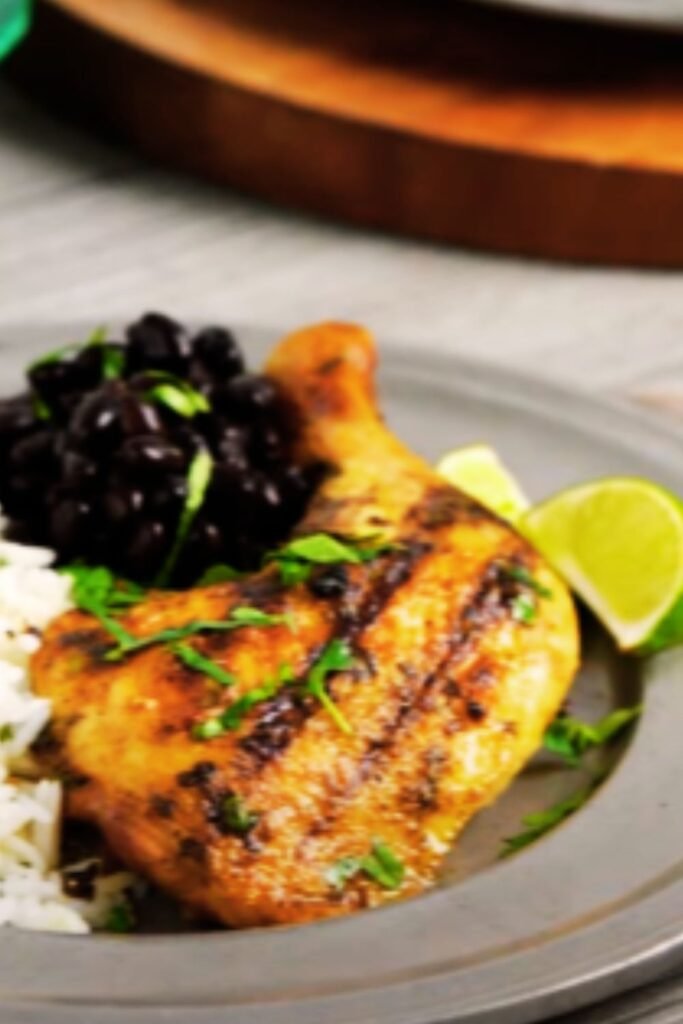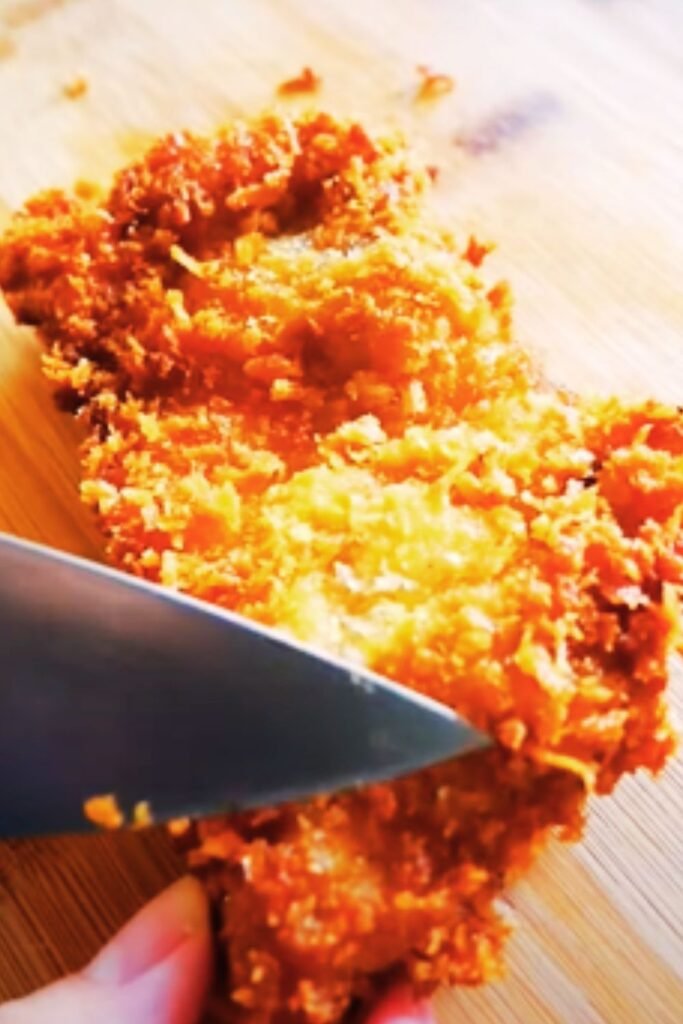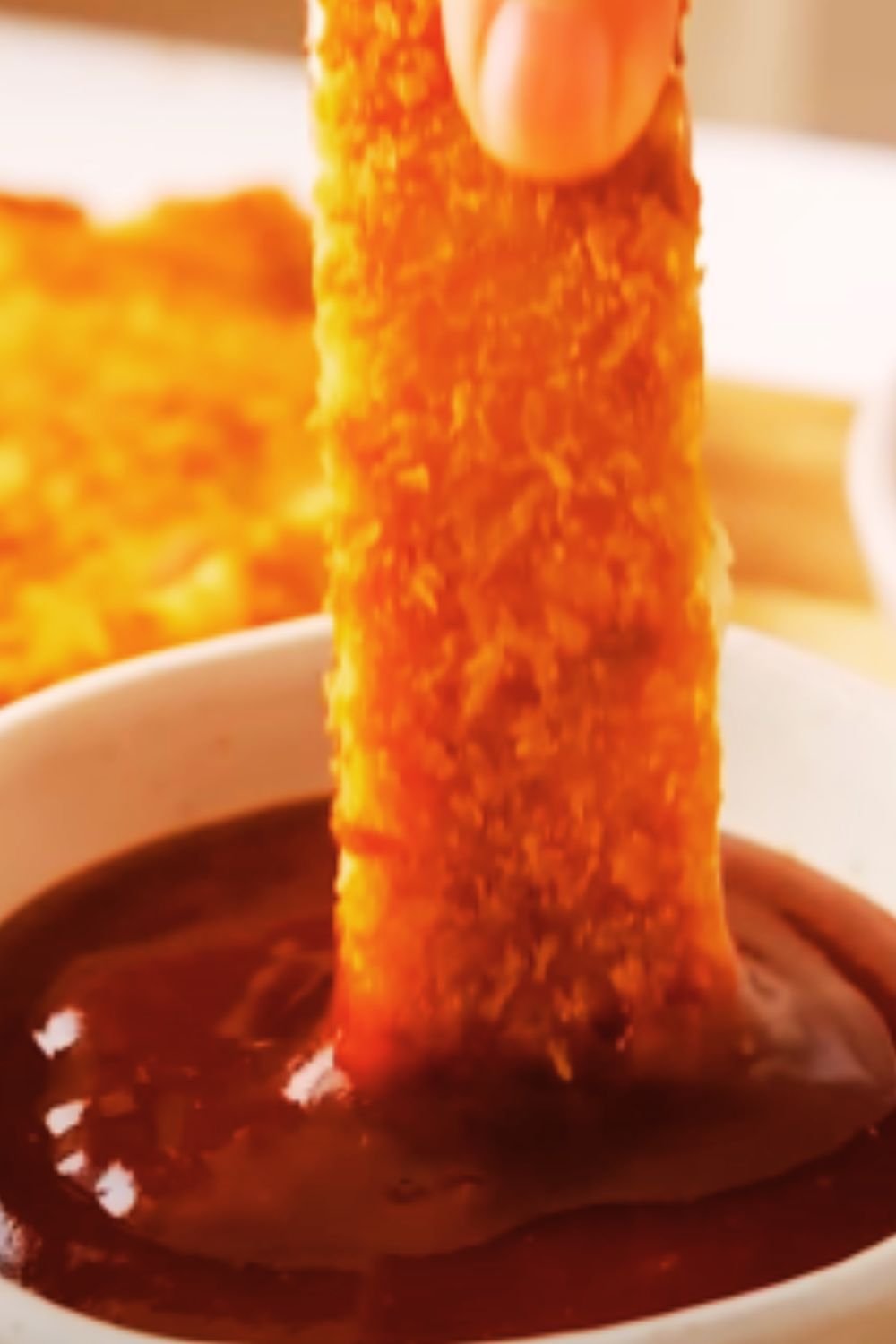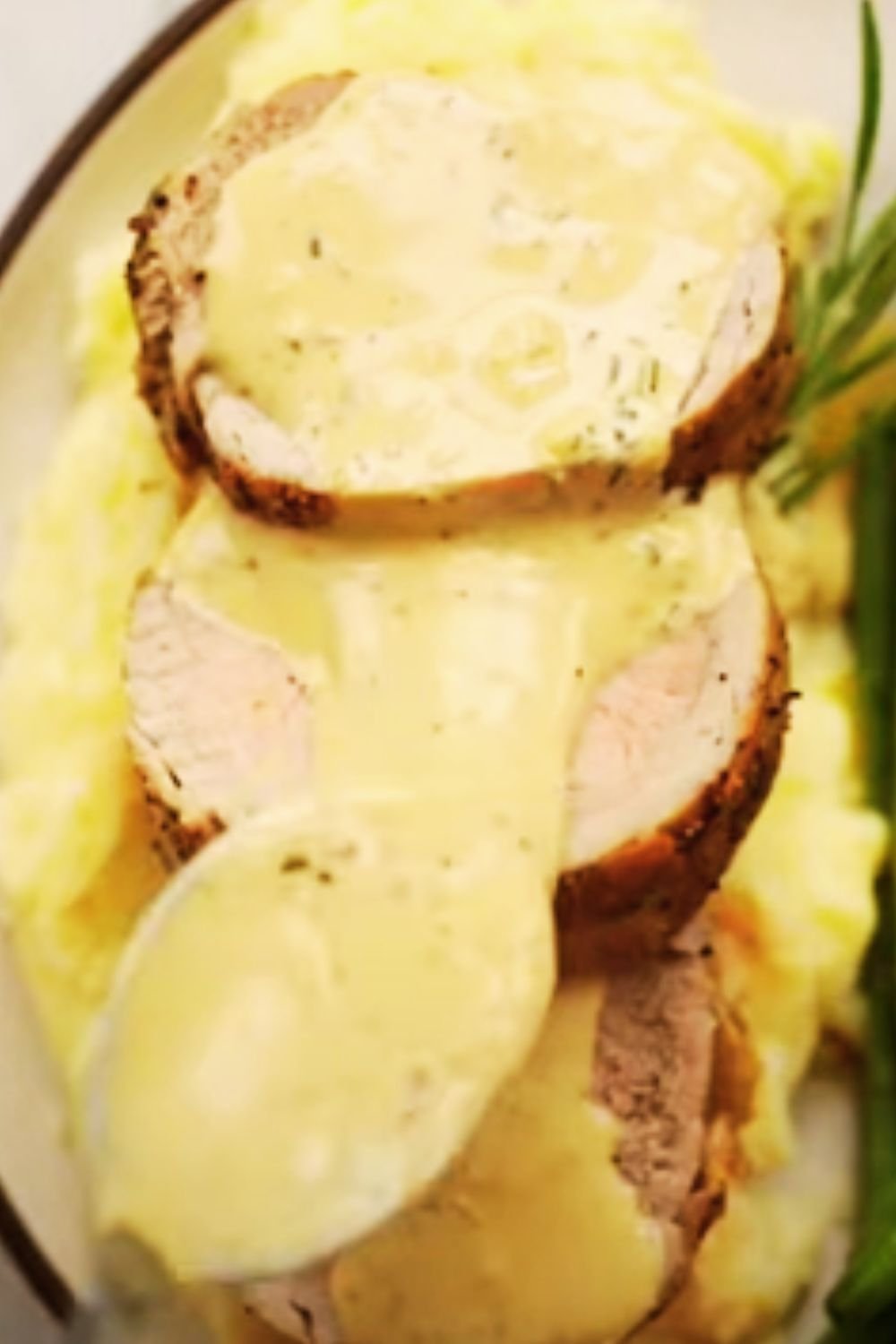When I first discovered the magical combination of Japanese chicken katsu with Cuban mojo sauce, my culinary world changed forever. This incredible fusion dish brings together the crispy, golden perfection of traditional katsu with the bright, citrusy punch of authentic mojo marinade. It’s a marriage of flavors that shouldn’t work but absolutely does, creating something extraordinary that will have your taste buds dancing with joy.
The beauty of mojo chicken katsu lies in its perfect balance of textures and flavors. The chicken remains incredibly juicy inside its golden panko crust, while the mojo sauce adds layers of garlic, citrus, and herbs that cut through the richness beautifully. I’ve been perfecting this recipe for years, and I’m thrilled to share every secret I’ve learned along the way.
What Makes Mojo Chicken Katsu Special
Mojo Sauce: A traditional Cuban marinade and sauce made primarily from citrus juices, garlic, and olive oil. The name comes from the Spanish word for “wet” or “to dip.”
Chicken Katsu: A Japanese dish consisting of breaded, deep-fried chicken cutlet, similar to schnitzel but with distinctly Japanese preparation methods and accompaniments.
Fusion Cooking: The art of combining elements from different culinary traditions to create new, harmonious flavors that respect both original cuisines.
The magic happens when these two culinary worlds collide. The acidic components in mojo sauce help tenderize the chicken while infusing it with incredible flavor, while the traditional katsu preparation method ensures that perfect crispy exterior we all crave.
Essential Ingredients for Perfect Mojo Chicken Katsu
Creating authentic mojo chicken katsu requires quality ingredients that I’ve carefully selected through countless kitchen experiments. Here’s what you’ll need:
For the Mojo Marinade:
- 1/2 cup fresh orange juice (preferably from sour oranges if available)
- 1/4 cup fresh lime juice
- 1/4 cup fresh lemon juice
- 8 cloves garlic, minced
- 1/2 cup extra virgin olive oil
- 2 tablespoons white wine vinegar
- 1 teaspoon ground cumin
- 1 teaspoon dried oregano
- 1/2 teaspoon salt
- 1/4 teaspoon black pepper
- 1/4 cup fresh cilantro, chopped
For the Chicken Katsu:
- 4 boneless, skinless chicken breasts (6-8 oz each)
- 1 cup all-purpose flour
- 3 large eggs, beaten
- 3 cups panko breadcrumbs
- Vegetable oil for frying (about 3-4 cups)
- Salt and pepper to taste

Nutritional Benefits and Considerations
| Nutrient | Per Serving | % Daily Value |
|---|---|---|
| Calories | 485 | 24% |
| Protein | 42g | 84% |
| Carbohydrates | 28g | 9% |
| Fat | 24g | 31% |
| Fiber | 2g | 7% |
| Vitamin C | 45mg | 50% |
| Iron | 2.1mg | 12% |
| Calcium | 65mg | 5% |
This dish provides excellent protein content while the citrus in the mojo sauce delivers a healthy dose of vitamin C. The panko coating adds some carbohydrates for energy, making this a well-balanced meal when paired with vegetables or a light salad.
Step-by-Step Preparation Method
Preparing the Mojo Marinade
I always start with the mojo marinade because it needs time to develop its flavors. In a large bowl, I combine all the citrus juices first – the orange, lime, and lemon create this beautiful symphony of tartness and sweetness. Then I add the minced garlic, and here’s my secret: I let it sit for about 10 minutes before adding the oil. This allows the garlic to slightly “cook” in the acid, mellowing its bite while maintaining its punch.
Whisking in the olive oil slowly creates a better emulsion, though mojo traditionally separates and that’s perfectly fine. The cumin and oregano add earthy depth, while the fresh cilantro brings brightness that ties everything together.
Preparing the Chicken
The key to perfect katsu is in the chicken preparation. I pound each breast to an even thickness of about 3/4 inch – this ensures even cooking and prevents the dreaded dry chicken scenario. I season both sides generously with salt and pepper before the breading process begins.
Here’s where my technique differs from traditional katsu: I marinate the seasoned chicken in half of my mojo sauce for at least 2 hours, but preferably overnight. This step infuses incredible flavor throughout the meat and helps tenderize it beautifully.

The Perfect Breading Station
Setting up an efficient breading station is crucial for success. I arrange three shallow dishes: flour in the first, beaten eggs in the second, and panko breadcrumbs in the third. I remove the chicken from the mojo marinade and let excess drip off – we want some of those flavors to stay with the chicken.
Each piece gets dredged in flour first, shaking off excess, then dipped in beaten egg, ensuring complete coverage, and finally pressed firmly into the panko crumbs. I use one hand for wet ingredients and one for dry to prevent the dreaded breading gloves on my fingers.
Frying to Golden Perfection
Temperature control is everything when frying katsu. I heat my oil to exactly 340°F (170°C) – slightly lower than typical frying temperatures because we want the chicken to cook through without burning the coating. A good thermometer is essential here; guessing leads to disappointment.
I fry each piece for about 4-5 minutes per side, depending on thickness. The coating should turn a beautiful golden brown while the internal temperature reaches 165°F (74°C). I always let the chicken rest on a wire rack for a few minutes after frying to maintain crispiness.
Cooking Techniques and Pro Tips
Oil Temperature Management
Maintaining consistent oil temperature is perhaps the most critical aspect of perfect katsu. When you add chicken to the oil, the temperature will drop. I compensate by increasing heat slightly when adding chicken, then reducing it once the oil temperature stabilizes.
Double-Dredging Technique
For extra crispy coating, I sometimes double-dredge my chicken. After the initial flour-egg-panko sequence, I dip it back in egg and panko once more. This creates an incredibly crunchy exterior that stays crispy longer.
Resting the Marinade
The reserved mojo sauce (the half we didn’t use for marinating) becomes our serving sauce. I let it come to room temperature and give it a good stir before serving, as separation is natural and actually desirable in authentic mojo.
Flavor Variations and Customizations
| Variation | Key Changes | Flavor Profile |
|---|---|---|
| Spicy Mojo Katsu | Add 2 jalapeños, 1 tsp cayenne | Heat with citrus brightness |
| Herb-Crusted | Add dried thyme, rosemary to panko | Earthy, Mediterranean notes |
| Coconut Katsu | Replace 1 cup panko with shredded coconut | Tropical sweetness |
| Asian Fusion | Add ginger, soy sauce to mojo | Complex umami depth |
Regional Adaptations
Different regions have their own takes on mojo sauce. In some parts of Cuba, they add bitter orange juice, which creates a more complex flavor profile. Puerto Rican versions often include more herbs like recao (culantro), while some Mexican variations incorporate chipotle peppers for smokiness.
I’ve experimented with all these variations, and each brings something unique to the table. The beauty of this dish lies in its adaptability to your personal taste preferences.
Serving Suggestions and Pairings

Mojo chicken katsu pairs beautifully with a variety of sides that complement both the Japanese and Cuban influences. I love serving it with:
Traditional Japanese Sides:
- Steamed white rice with a drizzle of the mojo sauce
- Simple cucumber salad dressed with rice vinegar
- Miso soup with wakame seaweed
- Pickled vegetables (tsukemono)
Cuban-Inspired Accompaniments:
- Black beans and rice (moros y cristianos)
- Sweet plantains (plátanos maduros)
- Yuca with garlic sauce
- Simple avocado salad with lime dressing
Fusion Options:
- Coconut rice pilaf
- Asian slaw with mango
- Grilled pineapple rings
- Cilantro-lime quinoa
The key is balancing the richness of the fried chicken with lighter, acidic, or fresh elements that don’t compete with the complex flavors already present in the dish.
Storage and Reheating Guidelines
| Storage Method | Duration | Quality Notes |
|---|---|---|
| Refrigerator | 3-4 days | Coating softens but still delicious |
| Freezer | Up to 3 months | Best frozen before frying |
| Room Temperature | 2 hours max | Food safety concern beyond this |
Proper Storage Techniques
I always store leftover mojo chicken katsu in the refrigerator, wrapped loosely in paper towels to absorb excess moisture, then placed in an airtight container. The paper towels help prevent the coating from becoming completely soggy.
Reheating for Best Results
The oven method works best for reheating. I preheat to 375°F (190°C) and place the chicken on a wire rack over a baking sheet. This allows air circulation around the entire piece, helping to re-crisp the coating. Usually, 8-10 minutes does the trick, depending on thickness.
Avoid the microwave at all costs – it will turn your beautiful crispy coating into a sad, soggy mess.
Troubleshooting Common Issues
Problem: Coating Falls Off During Frying
Solution: Ensure each piece is properly dried after marinating, and press the panko firmly into the chicken. Let breaded chicken rest for 10 minutes before frying to help the coating adhere better.
Problem: Chicken is Dry Inside
Solution: Don’t skip the marinating step, and use a meat thermometer to avoid overcooking. The internal temperature should reach exactly 165°F (74°C), no higher.
Problem: Oil Temperature Fluctuates
Solution: Use a heavy-bottomed pot or deep fryer with good temperature control. Don’t overcrowd the pan, as this causes temperature drops.
Problem: Mojo Sauce is Too Acidic
Solution: Add a teaspoon of honey or a pinch of sugar to balance the acidity. You can also add more olive oil to mellow the citrus intensity.
Cultural Background and History
The fusion of Japanese katsu techniques with Cuban mojo sauce represents a beautiful example of how food transcends cultural boundaries. Chicken katsu itself evolved from European schnitzel, brought to Japan during the Meiji period, while mojo sauce has roots in Spanish colonial cuisine adapted with indigenous Caribbean ingredients.
This combination likely emerged in areas with significant Japanese and Cuban populations, particularly in places like Peru and Brazil, where both communities have strong culinary presences. The marriage works because both cuisines appreciate the balance of acid, fat, and texture – fundamental principles that translate across cultures.
Advanced Techniques for Perfect Results
Brining for Extra Juiciness
Sometimes I take this dish to the next level by brining the chicken before marinating in mojo. A simple brine of water, salt, and sugar for 2-4 hours before the mojo marinade creates incredibly juicy results. The salt in the brine helps break down proteins, allowing for better flavor penetration.
Clarifying the Oil
For restaurant-quality results, I sometimes clarify my frying oil by heating it gently with a few drops of water and skimming off any impurities. This creates cleaner-tasting fried chicken with less greasy flavor.
Making Mojo Oil
I’ve discovered that making a mojo-infused oil by gently heating olive oil with garlic and herbs, then adding citrus juices off heat, creates a more integrated flavor. This technique requires practice but produces professional results.
Questions and Answers
Q: Can I use chicken thighs instead of breasts for this recipe? A: Absolutely! Chicken thighs work wonderfully and actually stay more moist during frying. Adjust cooking time to about 6-7 minutes per side, and ensure internal temperature reaches 165°F (74°C).
Q: How long should I marinate the chicken for optimal flavor? A: I recommend a minimum of 2 hours, but overnight (8-12 hours) produces the best results. The acid in the mojo helps tenderize the meat while infusing flavor throughout.
Q: Can I make the mojo sauce ahead of time? A: Yes! Mojo sauce actually improves with time as flavors meld together. I often make it a day ahead and store it covered in the refrigerator. Just bring it to room temperature before serving.
Q: What’s the best oil for frying chicken katsu? A: I prefer neutral oils with high smoke points like vegetable oil, canola oil, or peanut oil. Avoid olive oil for frying as it can break down at high temperatures and impart bitter flavors.
Q: Can I bake this instead of frying? A: While baking is possible, you won’t achieve the same crispy texture. If you choose to bake, use a wire rack over a baking sheet at 425°F (220°C) for about 20-25 minutes, flipping once halfway through.
Q: How do I know when the oil is ready for frying? A: Use a thermometer to ensure 340°F (170°C), or test with a small piece of panko – it should sizzle immediately and float to the surface when the oil is ready.
Q: Can I make this gluten-free? A: Yes! Substitute the all-purpose flour with gluten-free flour blend and use gluten-free panko breadcrumbs. The texture will be slightly different but still delicious.
Q: What should I do if my mojo sauce separates? A: This is completely normal and traditional! Simply stir it before using. The separation doesn’t affect flavor and many people prefer the rustic appearance of separated mojo.
Q: How can I make this dish less oily? A: Ensure your oil temperature is correct – too cool and the chicken absorbs more oil. Also, drain properly on a wire rack after frying, and consider serving with extra citrus to cut through richness.
Q: Can I freeze the marinated chicken before breading? A: Yes! This actually works great for meal prep. Freeze the marinated chicken in portions, then thaw completely before breading and frying. The texture might be slightly different but still excellent.
This incredible fusion dish has become one of my signature recipes, combining the best of both culinary worlds. The crispy texture of perfectly fried katsu paired with the bright, garlicky punch of authentic mojo sauce creates a harmony of flavors that never fails to impress. Whether you’re cooking for family dinner or entertaining guests, mojo chicken katsu delivers restaurant-quality results that will have everyone asking for the recipe.


